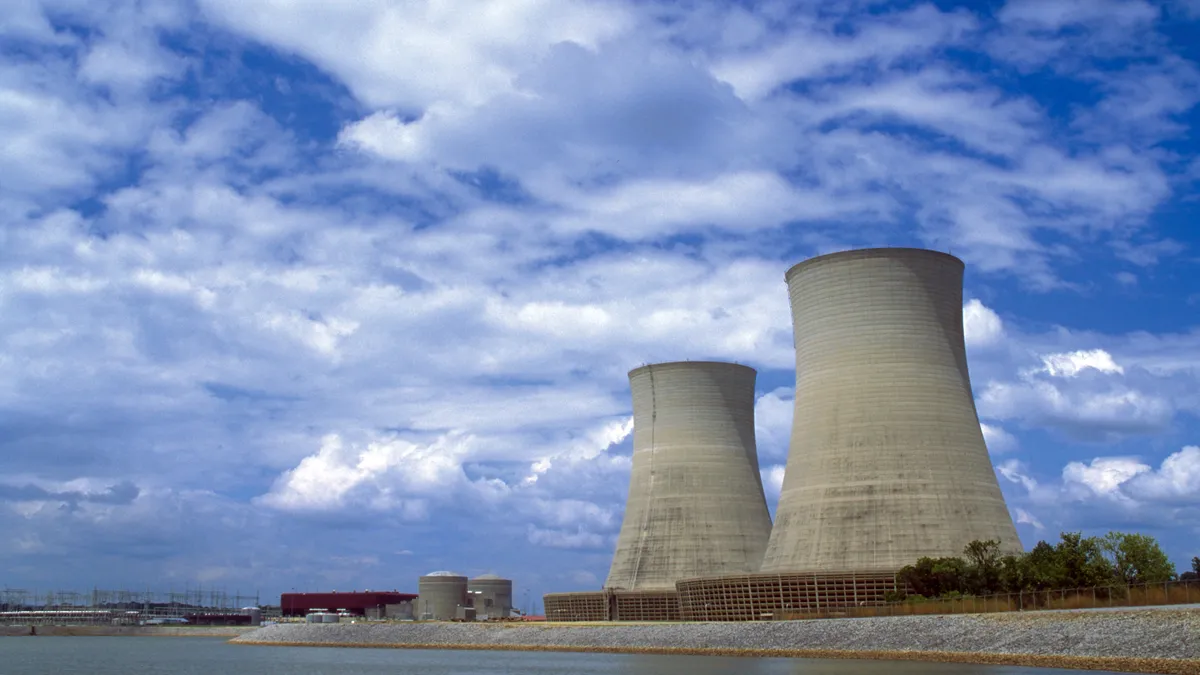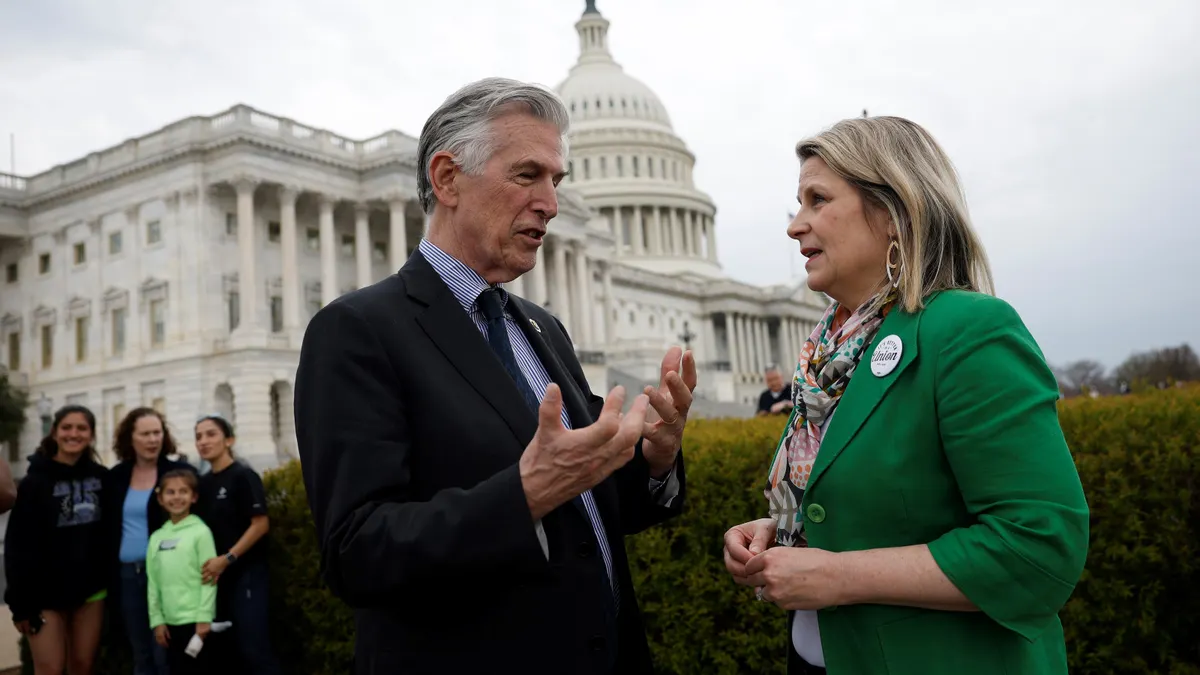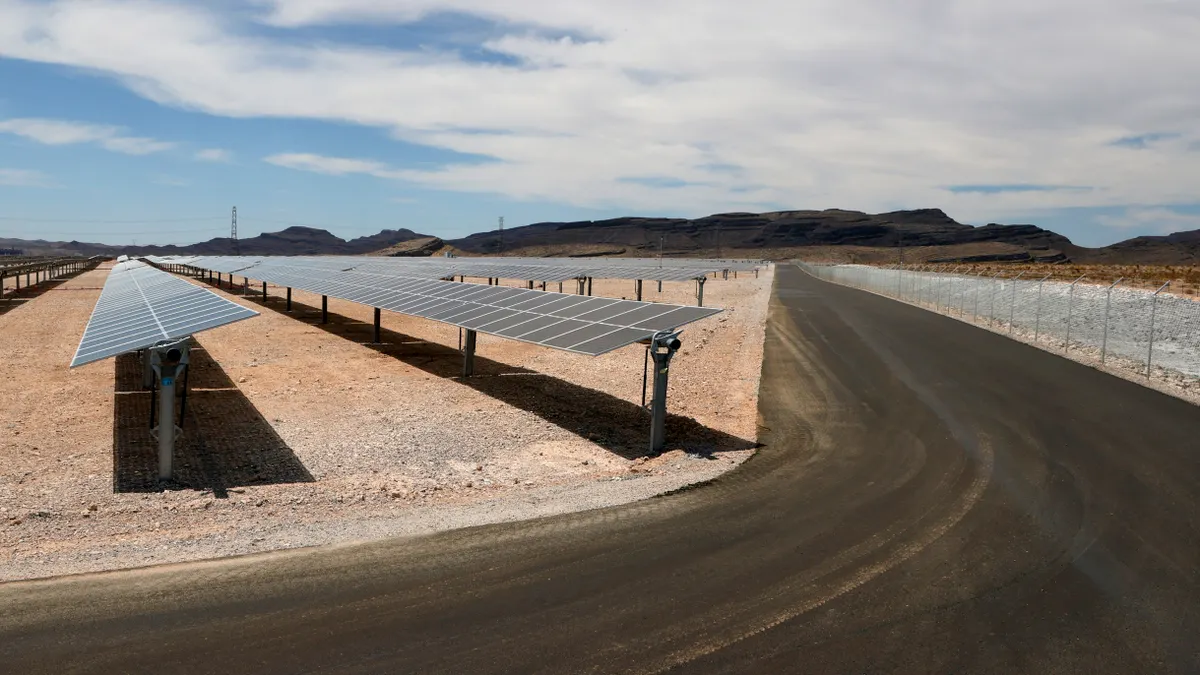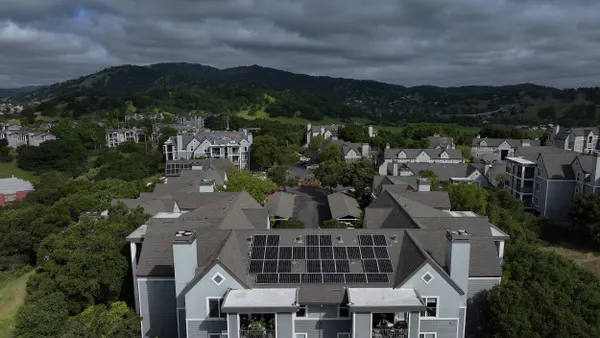A large disparity in two new solar valuation studies demands explanation.
Studies of the value of solar and of distributed energy resources (DER) attempt to quantify their benefits and costs. They have been pivotal, but not decisive, in net energy metering (NEM) debates. Some have concluded rooftop, or behind-the-meter (BTM), solar imposes costs on non-solar-owning utility customers. Others have shown solar benefits the system.
In 2017, 28 valuation studies were proposed, pending or decided in 21 states and DC, according to the North Carolina Clean Energy Technology Center (NCCETC) 2017 solar policy review. Regulators are increasingly turning to studies as a foundation on which to build “value-based compensation structures” for solar, NCCETC reported in April. Now the challenge is getting the study methodology right.
The disparity
A solar valuation study is intended to quantify the cost or benefit each solar owner's array brings to the system. It is calculated in the same volumetric terms as rates, allowing the value to be expressed as a rate of compensation for solar-generated electricity exported to the grid by the solar array owner. Depending on the variables used in the calculation, it may come out above or below the retail rate of system power.
A March 29 study for Northwestern Energy of its Montana territory showed BTM solar’s levelized 25-year value to be between $0.035/kWh and $0.046/kWh. An April 10 draft study done for Maryland’s Public Service Commission (PSC) showed BTM solar’s 2019 value in the state’s investor-owned utility (IOU) territories to be between about $0.31/kWh and about $0.41/kWh.
That's about an 88% difference, but the sun is not 88% brighter in Maryland than in Montana. The biggest single difference impacting these numbers is that the most recent average retail price of electricity for Montana is $0.088/kWh and $0.122/kWh for Maryland. Such price differences affect the valuation findings because each element of the value calculation is based in part on its share of the retail price.
A comparison of these studies shines some light on solar valuation methodologies and best practices. One thing is as clear as the light of day: If these studies stand, the future of Maryland’s solar industry is probably much brighter than the future of Montana’s solar industry. But there is significant reason to doubt the numbers in either are final.
Troubles with numbers
In Montana, stakeholders are dissatisfied with solar’s low valuation. They are preparing a request to the utility and Navigant Consulting, which authored the study, for supporting data. The request may go to the legislature, which ordered the study in HB 219. Or it may go to the PSC, which was authorized by HB 219 to oversee the study. Or it may go to the utility, which hired Navigant.
The Maryland study is more wide-ranging and detailed. It addresses both BTM and utility-scale solar. And it provides separate valuations for Baltimore Gas & Electric (BGE), Potomac Edison, Delmarva Power & Light and Potomac Electric Power Company (PEPCO).
The Marlyand PSC acknowledges the Daymark Energy Advisors study remains a work in progress. On April 30, a commission hearing asked for stakeholder input.
BGE energy efficiency programs manager John Murach, representing the IOUs, told the PSC the economic benefits of solar, which almost double solar’s value in the study, do not belong in the calculation because they are part of the cost of service methodology used in ratemaking. He also argued some benefits are double counted and others reflect an inadequate understanding of utility operations.
His objections were seconded by Edison Electric Institute (EEI) Director of State Energy and Regulatory Policy Alison Williams Sremack.
Former Texas utilities commissioner and Department of Energy Assistant Secretary Karl Rabago was, as an Austin Energy executive in 2012, the first to apply a value of solar study to the design of a rate for BTM solar. He is now executive director of the Pace Energy and Climate Center and a frequent expert witness in value of solar, rate and grid modernization regulatory proceedings. “Both studies are flawed,” he told Utility Dive.
The Montana study fails to accurately credit solar for its benefits because it applies a too-narrow definition of utility costs, he said. The Maryland study is more accurate on solar’s costs and benefits, but fails to treat solar as a long-term generation resource that can replace more expensive, price volatile and polluting generation resources.
“But the big positive in the Maryland study is that it recognized that distributed energy resources have huge local economic benefits,” Rabago said. “It is not clear Maryland’s regulators will recognize them in rate making proceedings, but they are real values and should be factored in.”
Montana’s missing data
Northwestern Energy commissioned the Navigant study to fulfill its HB 219 obligations. The analysis began with cost and benefit categories determined to be Minimum Information Requirements (MIR) in a Montana PSC-led stakeholder process. Navigant added categories recommended by Northwestern Energy, and determined 25-year levelized per kWh values for three solar adoption scenarios using the Utility Cost Test (UCT) standard.
The UCT focuses on costs incurred by the utility. Other standards, not stressed by Navigant, focus on ratepayer or other impacts.
“The claim is that utility revenues lost to solar use is a cost to the utility. But that is like saying a person who uses electricity more efficiently or goes on vacation imposes a cost on the utility.”

Andrew Valianis
Executive Director, Montana Renewable Energy Association
Both Montana Environmental Information Center (MEIC) Clean Energy Program Director Brian Fadie and Montana Renewable Energy Association (MREA) Executive Director Andrew Valianis said the Navigant study does not include adequate data on its assumptions and modeling to verify its claims. Together with other stakeholders, they are preparing a formal request for more information.
The stakeholders accepted the PSC-adopted MIR categories, Fadie said. “But the PSC permitted the utility to include other categories, and it chose to add lost revenue as a cost.”
That “jumps off the page,” Valainis agreed. “The claim is that utility revenues lost to solar use is a cost to the utility. But that is like saying a person who uses electricity more efficiently or goes on vacation imposes a cost on the utility.”
Another major concern is Navigant’s assumptions about Montana solar growth, Valainis said. MREA’s website hosts a Northwestern Energy database showing 6.3 MW of NEM solar on the utility’s system through 2015, he said. “Navigant’s low solar scenario projects 16.4 MW in 2018, a 150% growth in three years. That is an incredibly optimistic forecast.”
Fadie added that a 2017 report for the Montana Department of Environmental Quality estimated 38 MW would be added by 2027. “The low Navigant projection for 2027 is 112 MW,” he said.
“The Navigant study does not explain how its projections were derived. That leaves uncertainty,” Fadie added. “What is not uncertain is that the numbers are too high.”
This is pivotal to the solar advocates' argument because NWE's revenue losses were included in Navigant's cost calculation. The more solar on the system, the greater the NWE revenue losses and the more the cost-benefit valuation moves toward a higher cost and a lower value for solar.
Northwestern was unable to provide substantive information on the study and Navigant declined Utility Dive’s request for an interview.
Solar’s economic benefits in Maryland
The Daymark study was ordered by the Maryland PSC in Public Conference 44 to meet conditions attached to the 2016 PEPCO-Exelon merger.
Like the Navigant study, it evaluates the potential benefits and costs of BTM solar. Unlike Navigant, Daymark considered both direct utility values and societal and economic benefit and cost categories. Daymark also goes beyond Navigant by estimating the value of utility-scale solar.
BTM solar’s higher 2019 value of $0.31/kWh to $0.41/kWh decreases to $0.26/kWh to $0.31/kWh in 2028. In the exact opposite trend line, utility-scale solar’s 2019 value of $0.15/kWh to $0.19/kWh increases to $0.19/kWh to $0.22/kWh by 2028.
The Daymark study is different from the Navigant study in two other important ways. One is the very large economic benefit finding.
Both BGE’s Murach and EEI’s Sremach urged the PSC to not recognize the economic benefits in rate making. Their concern was that the above retail rate values might be used in a reconsideration of NEM compensation.
David Littell, a Regulatory Assistance Project (RAP) principal and former Maine utility commissioner, is an advisor to Maryland commission. “It is not surprising that EEI would raise this concern,” he told Utility Dive. “But I have never seen a valuation study translate directly into a program or into ratemaking. That is a different process.”
Nevertheless, Murach said the study's values “appear to be overly optimistic.” The utilities have been unable to identify Daymark’s base assumptions and modeling calculations adequately “to give a more precise critique,” he said. “We would ask that more details be shared.”
Murach was concerned that the study would be understood to say the high economic benefits are part of utility revenue streams and used to justify higher compensation for BTM solar. “Let the study be clear this is not what you recommend be considered for compensation rate design,” he told the PSC.
The other unique feature of the Daymark study is its quantification of distribution system benefits, according to Littell. “In other studies, it has been a theoretical estimate. This could be the first to fully quantify such benefits in detail.”
That value could be “up to $0.13/kWh depending on the circuit and its current characteristics," Daymark concluded.
Behind-the-meter solar depresses feeder loads during daylight hours, “but much of the infrastructure is carrying energy, whether it is going in or coming out, like a highway. Electrons are constantly moving, and wear and degradation will occur.”

John Murach
Energy Efficiency Programs Manager, BGE
In contrast, Navigant found a levelized distribution system value of $0.002/kWh. At the solar adoption levels forecast, Northwestern Energy “would encounter performance issues” and distribution system upgrades that would reduce “the net benefit that solar provides to the grid,” Navigant reported.
BGE’s Murach made a similar argument to the PSC about Daymark's calculation of distribution system benefits. BTM solar depresses feeder loads during daylight hours, “but much of the infrastructure is carrying energy, whether it is going in or coming out, like a highway,” he said. “Electrons are constantly moving, and wear and degradation will occur.”
Both Littell and Rabago doubted this argument and suggested it needed to be clarified.
Daymark also calculated the total potential for future BTM and utility-scale solar development in Maryland, given the present system's technical limitations. The four IOUs could add a total of 32 GW of nameplate capacity, it found.
The IOUs, the PSC and state lawmakers should, therefore, “be developing policies and enhancing utility system planning processes to encourage additional cost-effective solar development,” Daymark reported. Acting soon will allow them to “shape the adoption” to planning and operational needs and to target development “to benefit the electric system and the state economy.”
The utilities’ technical engineering teams have serious concerns about the maximum nameplate solar hosting capacity assumptions, Murach said. Utility hosting capacity analyses show the maximum feeder capability for intermittent generation for the four Maryland IOUs is actually less than their maximum load, “yet these numbers are coming out two or three times the maximum load.”
He stressed that the utilities’ loads are declining. “The large majority of the investment in transmission, and particularly in distribution, is infrastructure renewal,” he said. “A solar facility is not going to help with infrastructure renewal without storage or other capabilities.”
The utilities completely agree that solar comes with “pros and cons for the system,” he concluded. “We are eager to see more detail and work with [the commission] to refine the different aspects of this.”
Two flaws and an emerging best practice
In more than a decade of work on the value of solar, Rabago consistently sees two major flaws in such studies. “Each of these studies demonstrates one,” he said.
The first is when a study uses benefits that are too narrow and inflates costs, which is what Navigant did, he said. “Its 25-year levelized values recognize solar as a resource, but its high 7.3% discount rate reduces solar’s future value. And it is wrong for the utility to assume that electricity sales lost to solar users is a utility cost. It does not have a ‘right’ to those kWh sales.”
The other flaw is in Daymark’s failure to recognize the value of building a resource that will be in place for 25 years, Rabago said. “It treats solar as a drive-by generator instead of an installed capital asset, simply because the utility does not own it. That turns every owner of distributed generation except the utility into a short-term marketer, but solar is going to generate for 25 or more years.”
Regulatory Assistance Project’s Littell said it is rare that any one model or approach is a definitive answer. He said Rabago’s concern “is an important distinction that Daymark will consider.”
NCCETC Senior Policy Research Manager Autumn Proudlove said both studies reveal an emerging best practice in valuation studies. Beyond basic system differences and retail electricity prices, “the most significant valuation differences come down to methodology and what is counted as costs and benefits,” Proudlove said.
Valuation studies “tend to be more useful when stakeholders work with regulators to establish a clear list of components to be studied beforehand,” she said. If regulators then provide a clear directive on how to apply those components, the result is a single valuation instead of opposing studies contested by opposing stakeholder groups, she said. “That is the direction a lot of states are moving in.”





















